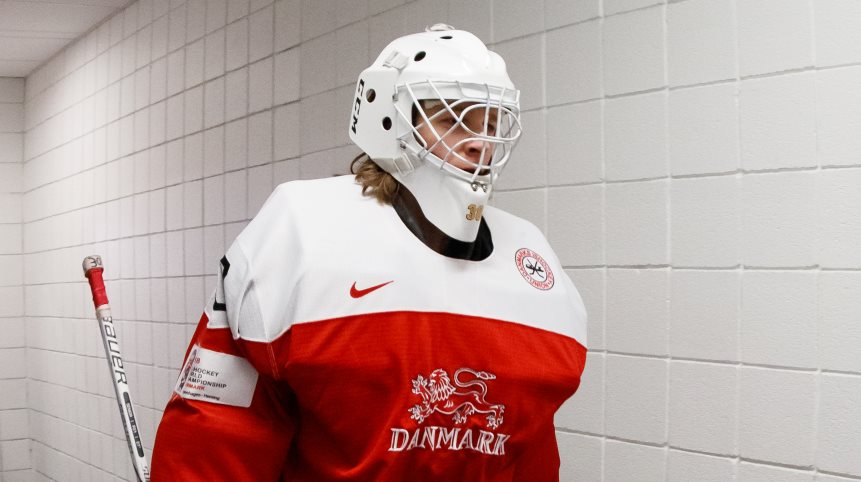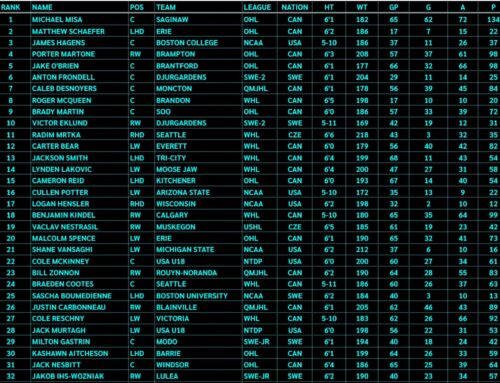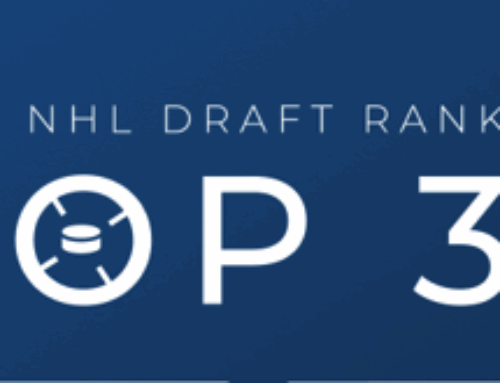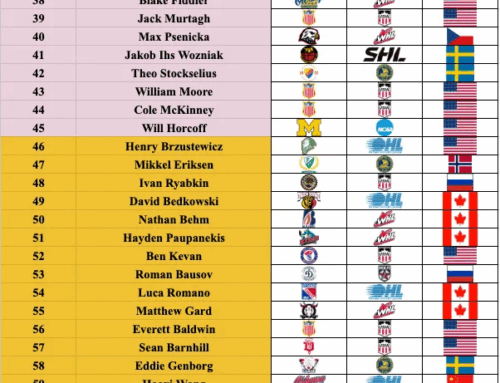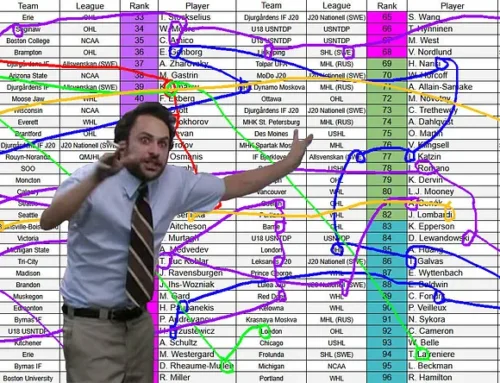Talking Goalies with Former NHLer Mike McKenna
Tony Ferrari
2019-11-13
Goalies are Voodoo. Or are they? Scouting goaltenders has always been one of the more difficult tasks in the world of evaluating prospects. It is a position that is furthest from any other in terms of evaluation. The position itself is unique in a game that already requires a unique skill set. While you can easily identify whether a forward or defenseman is a good skater by watching them track up and down the ice a few times, it takes more patience and a keen eye to identify whether a goaltender uses his skating at a high level or not. The movements are smaller, quicker, and often times, away from the puck which is where your eyes naturally follow.
Evaluating and understanding the goaltender position is a difficult task, one that takes experience, practice and deep knowledge of the position. To get a view inside the position, I reached out to former NHL and AHL goaltender Mike McKenna. Currently, a studio analyst for the Vegas Golden Knights, Mike McKenna also hosts of ‘6 Degrees with Mike McKenna’, a podcast where he does wide-ranging and uncensored interviews with a variety of guests from former NHLers including Marty Biron and Ron Tugnutt to IndyCar drivers James Hinchcliffe and Marcus Ericsson. The former professional netminder is slowly building a reputation as one of the best analysts in hockey as well as an excellent personality around the game. Mike was kind enough to give me a bit of his time, answering some of the questions that I have had or that have been asked of me.
Tony Ferrari: There’s a common phrase that people use when trying to evaluate goaltenders, “Goalies are Voodoo”. Do you think that’s true and if so, to what extent?
Mike McKenna: It depends on the age, but also on the experience of the person evaluating the goaltender. If you’re trying to predict the future of a 14-year old goalie, yes it’s very difficult, but that can be said for any hockey player, regardless of position. An 18-year old goaltender is relatively mature and should be easier to evaluate. But there’s the problem: most scouts aren’t goaltenders; they do not possess the positional knowledge to properly make an assessment. They rely on old tropes and cliches to evaluate, and they skew very heavily towards goaltenders on winning teams. If more NHL teams were to have goalie-specific scouts on their staff, I think the results would be much easier to predict. Goalies today aren’t self-taught. They’ve had position-specific training from a young age: by 18, the product is very close to the end of the assembly line.
TF: What is the biggest tool a goalie can have in order to be successful at the professional level?
MM: Skating. Not sprinting to the blue 100 mph: goalie skating. If a goaltender is crisp, powerful, and smooth in their crease movements, they have a much better chance of beating the play, getting their feet set, and making the save.
TF: When watching a young goaltender play, what are some of the things that we should look for in terms of evaluating their play?
MM: Again, skating ability first and foremost. If that skillset is already developed, it checks off a lot of boxes that don’t need to be taught or improved upon. Technical ability such as post-integrations should be taken into account. Spatial awareness is incredibly important, along with depth control and flow. Puckhandling is a bonus. But more than anything, a goaltender needs to be competitive and battle hard. That means fighting through traffic to find the puck, tracking it efficiently, and ultimately doing what’s necessary to make saves. Most goaltenders can make simple technical saves these days. Not all can think outside the box when called upon.
TF: Is there an area of a young goalies game that you wouldn’t worry about as much?
MM: I don’t want to downplay the importance of having a good technical base for a young goalie, it is very important, but there’s a balance: if they look like a robot in net, that’s not good. They need to have creativity and passion for the position. Some goaltenders look incredible in practice but it doesn’t translate to games. I wouldn’t worry if a young goalie occasionally makes some mistakes while trying different things. It’s how they learn and over time it will improve their game.
TF: What area of a goaltender’s game is most easily improved as they develop?
MM: Technical changes are surprisingly easy for young goaltenders to pick up. We live in an era where information is so accessible: there are very few secrets and goalies are always trying to keep up with their peers. Youtube and NHL.com have made it so easy to copy the latest techniques.
TF: It’s often difficult to understand young goaltenders deflated statistics in junior hockey. How much do a junior-aged goaltender’s statistics matter?
MM: The statistics play out across the entire league, so it shouldn’t be hard to evaluate when graded against other goaltenders playing in the same circuit. The bottom line is that statistics do matter, but it must be taken into account how much (or little) help the goalie is receiving. If their team is awful, it’s an uphill battle, but a skilled evaluator should be able to spot a goaltender that is playing above their team’s ability. Conversely, there should be great caution when rating a goaltender on an exceptionally good team. Pro hockey is littered with goaltenders that were labeled “a winner” but lacked what was needed to become an NHL regular.
TF: We are in the era of big goalies, do you think size matters for goalies as much as we’ve come to believe?
MM: Absolutely. If you have a 6’4” goaltending prospect that has a similar skillset to one that’s 6’0”, it’s pretty obvious who is going to get the nod. In the old days, big goalies couldn’t move. That’s not true any longer: specialized training from a young age has leveled the playing field. Players are shooting the puck harder and more accurately than ever. Surface area and range matters. There are only a handful of goaltenders 6’0” or less in the NHL. Think about it this way: if you are under 5’11”, you need to be the best goaltender on the planet of that height if you want to have any chance of playing in the NHL. It’s a tall order, and it’s harsh, but it’s the reality.
TF: Is there a young goaltender that you think is on the verge of bursting onto the scene and showing that he can be a high-end starter at the NHL level?
MM: There’s 62 of them in the AHL right now. The fun is seeing who makes good on their opportunity when it comes!
I’d like to thank Mike McKenna for taking a few minutes out of his day to speak with me! His knowledge and experience are evident on the Vegas broadcast, becoming one of the best in the business in short order. I hope you were able to take away a bit of knowledge about the goaltending position and have a look into the mind of an athlete that’s been to the big show. You can follow Mike on Twitter and be sure to catch him on the Vegas Golden Knights broadcast!
******
Thanks for joining me for my mid-week Ramblings! This week was a bit of a different week but it was a good one nonetheless! It’s not every day that you get to talk to a former NHL goalie about the position. Let me know if you enjoyed this short conversation and if you’d like to see more! Comment below or reach out to me on Twitter @theTonyFerrari, my DMs are always open! Be sure to check out my newest project, Shift Work: Quinton Byfield, where I do a shift-by-shift analysis of Byfield’s game and figure out what makes him a top-three prospect for the 2020 NHL Draft. Until next time, enjoy the rest of the Canada-Russia series and the rest of the hockey around the world!




